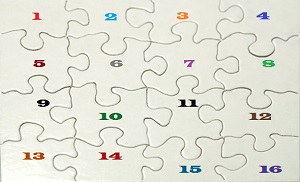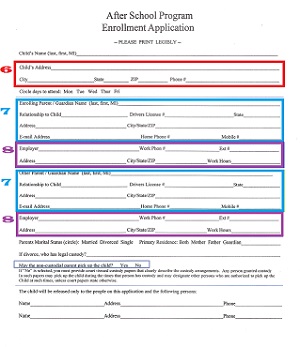The Illinois Marriage Dissolution and Marriage Act was substantially modified as of January 1, 2016. As a result, the old terms Child Visitation and Residential Custody have been replaced by Parenting Time and the old term Child Custody has been replaced by Parenting Responsibility.
Child Support is not part of the Parenting Plan.
Parents must provide the court with a Parenting Plan which spells out the details of the Parenting Time arrangement, Parenting Responsibility and how the parents will communicate with each other.
The purpose of the Parenting Plan is to reduce conflict between the parents by spelling out each parent’s responsibilities, how the transitions in Parenting Time will work, what matters each parent needs to communicate to the other, and how they will resolve deadlocked decisions. Ideally, it will reduce trips to court to resolve disputes, and make things easier on the child(ren).
Every situation that can possibly arise should be covered in the agreement. It should also contain provisions for making alterations to it in the future as the child gets older.
If the parents cannot agree on a Parenting Plan, the court will dictate how issues will be settled.
There are many pieces to a Parenting Plan.

1) The first section of the Parenting Plan covers decision making–which parent is making decisions for the following areas:
![]()
- Education – choice of school, special programs, or tutors
- Health – choice of doctors, dentists, or mental health providers
- Religious upbringing
- Choice of Extra-curricular Activities
This is to be spelled out to try to minimize disputes over decisions and to ensure that a parent who will make the decision must be specified for each of the four areas.
The same parent can make all the decisions or they can be split or both parents may be specified.
This eliminates the decision that needed to be made in the past on whether there would be Sole Custody or Joint Custody as far as decision-making was concerned.
2) The second section of the Parenting Plan contains a schedule or a formula which specifies where the child will live when. The allocation of time can be equal or unequal.
Here are charts of a couple of ways the parenting time can be divided. There are many more possibilities than those pictured here.

This section covers what would have been issues of Residential custody and Visitation before.
3) The third section of the Parenting Plan covers the details on how they would use Mediation to agree on changes needed in the Parenting Plan. (This is not needed if one parent has all the decision-making authority.)

This provision means that changes can be negotiated to the Parenting Plan without having to have a trial before a judge.
4) The fourth section of the Parenting Plan makes sure both parents have access to a child’s mental, dental, psychological, child care, school, and extracurricular activities’ records as well as reports and schedules unless the court has ordered otherwise.
This is so both parents can be up-to-date on everything affecting their child(ren) without depending on the other spouse to pass information on.

5) The fifth section of the Parenting Plan designates which parent is the Custodial Parent when one parent (not both) must be specified, for forms like damage waivers when enrolling a child in an athletic program. This is usually the parent who has the majority of the parenting time.
6-8) Sections six through eight of the Parenting Plan specify the child’s residential address, each parent’s home address and telephone number, and each parent’s employment addresses and phone numbers.

The remaining sections of the Parenting Plan deal with details to minimize conflict as the parents raise their child(ren).

- Section Nine specifies how much notice a parent must give the other before a residential move is made.
- Section Ten spells out conditions that require one parent to notify the other, such as emergencies, health care, travel plans, or other significant child-related issues.
- Section Eleven specifies transportation arrangements relating to the exchange of children for parenting time.
- Section Twelve spells out when and how each parent will be able to communicate with the children during the other parent’s parenting time.
- Section Thirteen indicates how they will settle issues if a parent wishes to change residences in the future.
- Section Fourteen specifies changes to the parenting plan if certain contingencies occur.
- Section Fifteen specifies procedures for dealing with situations where a parent wants to have the child during the other parent’s parenting time.
- Section Sixteen specifies any other provisions that would address the child’s best interests, or that would facilitate cooperation between parents.
The Court can make changes to the parenting plan if the particulars would be harmful to the child’s best interests.
We can assist you in developing the parenting plan that would be best for your child or children. Contact us at (312) 558-9100.
